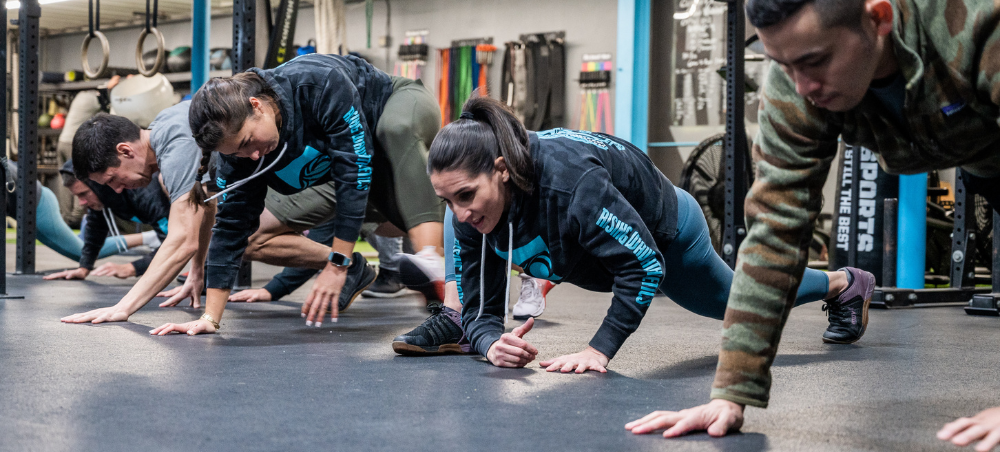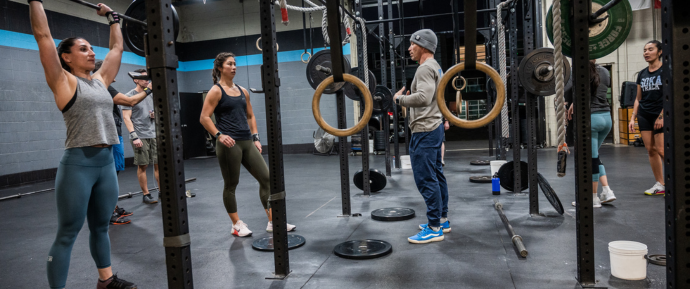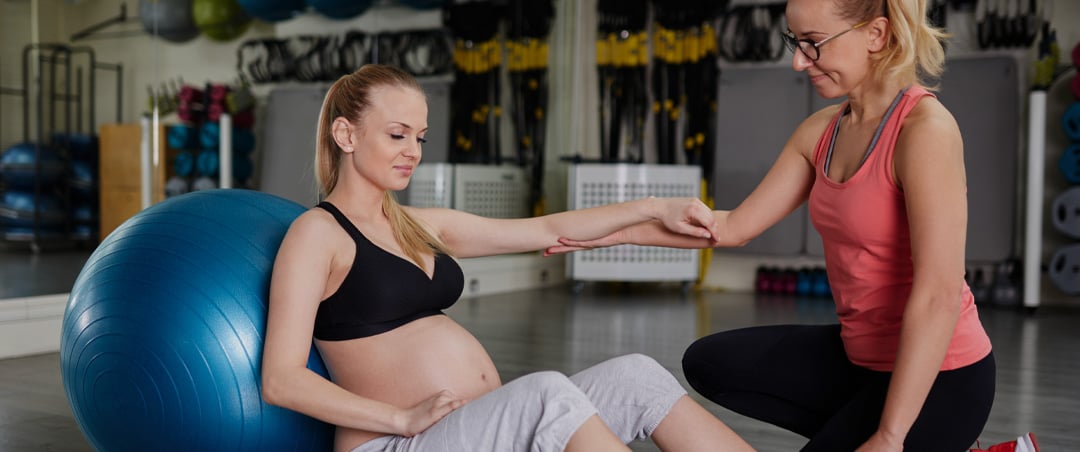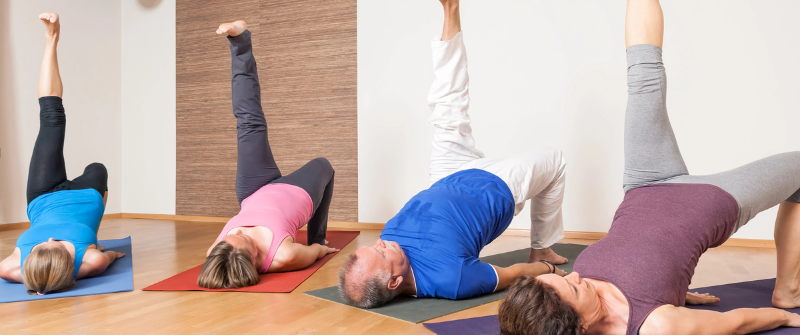
- by NEXO Team
- February 27, 2023
Managing a successful gym business means having the right combination of services, amenities, and staff. It takes a lot of time and effort to determine the necessary services to create the right culture and provide members with a remarkable experience every time they walk through the doors. Doing so also helps to weed out subpar trainers and workers from the best.
The bigger the variety of classes available at the gym, the better. It’s best to diversify your gym businesses' classes and training schedules to accommodate members’ varying needs and interests and ensure their fitness, health, and wellness needs are met. Look at the top six gym classes fitness businesses and trainers should offer.
Gym Class Structure
In order to determine the class type, it helps to decide which class structure is best suited for your gym and its members. Some facilities do well with strictly offering private classes, while others are more versatile with providing members with different gym classes. Consider the following types of fitness classes available at some of the most popular gyms worldwide.
- One-On-One/Private Training
- Group Sessions
- Competition Style
- Online/On-Demand Training
- Classes For Older Adults And Limited Mobility Individuals
- CrossFit Training
1. One-on-One/Private Training
One-on-one or private training gym classes are personalized fitness sessions between individuals and trainers. Professional trainers design workout plans based on their clients’ fitness goals, needs, and abilities. Clients benefit from the undivided attention they receive from trainers because it allows them to focus on their specific needs and goals.
Private gym classes are easy to customize. Workout plans provide a higher level of motivation and accountability because members have a specific plan to follow and a trainer tracking their progress. One-on-one training provides more personalized feedback, and workouts can be adjusted as needed to ensure members meet their fitness goals and get better results in a timely manner.
Also, private training classes provide a higher level of privacy and comfort. Only some people feel comfortable working out in front of others or in a group setting. One-on-one training sessions create an environment for them to feel comfortable.
2. Group Sessions
Group fitness classes are instructor-led workouts involving individuals exercising in a structured setting. Some examples include Zumba, yoga, Pilates, spinning, and boot camp. The benefits of group fitness classes include the following:
- Motivation and accountability for members
- A wider variety of styles and exercises to keep members active and engaged
- Social interaction opportunities for members to meet new people and build a sense of community
- Instructors provide proper form, technique guidance, and corrections to help ensure clients perform their exercises correctly and safely.
- Group fitness classes are often more affordable than personal training sessions for some members.
- Regular participation in group fitness classes improves cardiovascular health, strength, flexibility, and overall fitness.
3. Competition Style
Competition-style fitness classes typically involve high-intensity exercises that mimic the movements and challenges of various sports or competitions, such as boxing, MMA, or obstacle courses. These classes are designed to improve strength, agility, endurance, and overall fitness levels. They're also great for fitness business owners looking to add fun and engaging exercise workouts for members.
4. Online/On-Demand Training
Gym online/on-demand training classes are virtual fitness classes that members can access online from the comfort of home or anywhere. These classes typically include live or pre-recorded workout sessions that can be conveniently streamed or downloaded anytime. Members can choose the workout that best fits their interests, fitness level, and goals. Online/on-demand classes are often less expensive than traditional gym memberships or in-person fitness classes and can be tailored to any fitness level and modified to accommodate any physical limitations or injuries.
5. Classes for Older Adults And Limited Mobility Individuals
Senior gym classes are specifically designed for older adults and those with limited mobility. Popular class options include low-impact exercises like yoga, Pilates, water aerobics, and strength training; all focus on improving balance, strength, and flexibility. These workouts enable seniors to build strength and improve their balance while reducing their risk of accidents and injuries.
6. CrossFit Training
CrossFit classes are high-intensity workout sessions that combine strength training, cardio, and functional movements. These classes typically last 45 to 60 minutes and involve performing a series of exercises in rapid succession with little to no rest in between. The goal is to push your body to its limits and achieve maximum fitness results.
During a CrossFit class, you will typically be guided through a series of exercises that include weightlifting, plyometrics, bodyweight exercises, and cardio. The exercises are designed to be performed in quick succession, with the goal of keeping your heart rate elevated and your body working at maximum capacity throughout the entire workout.
CrossFit classes can be adapted to suit any fitness level. The workouts can be scaled up or down depending on your fitness level, making them suitable for everyone, from beginners to elite athletes.
In addition to the physical benefits of CrossFit classes, many people enjoy the social aspect of the workouts. Participants often form close bonds with other class members and provide support and motivation to one another.
Sadly for some, aging means fewer opportunities to get out and abet and interact with others. Because socializing is critical to overall mental and emotional well-being, offering senior classes at the gym makes it easier for seniors to get into the community and location.
Regular exercise while aging in place can help seniors maintain their independence and enjoy a higher quality of life as they age. Regular exercise can help seniors maintain their independence and enjoy a higher quality of life as they age. Regular exercise can help improve heart health, reduce the risk of chronic diseases, and improve overall physical and mental health. Senior gym classes often include low-impact exercises that are easier on the joints, making them a great option for older adults with arthritis or other joint issues.
Overall, CrossFit classes are an excellent option for anyone looking for a challenging, high-intensity workout that will push them to their limits and help them achieve their fitness goals.

Another way to diversify gym classes is to offer classes that cater to specific demographics, such as seniors, pregnant women, or individuals with disabilities. These classes can be modified to accommodate the needs and limitations of the participants, ensuring that everyone can participate and benefit from physical activity.
In addition, incorporating new and innovative fitness trends into gym classes can attract a wider range of individuals. For example, incorporating technology into workouts, such as virtual reality or gamification, can make workouts more engaging and fun for participants.
Overall, diversifying gym classes can lead to a more inclusive and welcoming environment, encouraging individuals to participate in physical activity and improving physical and mental health.
Gym Classes and Gym Insurance
Gym classes are a great way to diversify offerings for gym-goers and create a more engaging and inclusive fitness environment. However, it is important to consider the impact of gym classes on gym insurance.
When offering gym classes, there is a risk of injury to participants. Gym owners and trainers must take necessary precautions to prevent injury, such as providing appropriate equipment, ensuring participants are properly trained and enforcing safety rules. However, accidents can still happen, and gym owners must protect themselves and their businesses with appropriate insurance coverage.
Gym insurance policies typically include coverage for bodily injury and property damage and other liabilities that may arise from offering gym classes, such as wrongful acts, professional errors, and omissions. It is important to review the policy coverage and limits to ensure adequate protection.
Gym owners should also consider the risks associated with different gym classes. For example, high-intensity classes may carry a higher risk of injury, while courses for seniors or individuals with disabilities may require specialized equipment and training.
In addition to insurance coverage, gym owners should have a solid risk management plan in place, including regular safety inspections, employee training, and emergency response protocols.
Offering gym classes can be a great way to attract and retain gym-goers, but it is important to ensure that appropriate insurance coverage and risk management measures are in place to protect both the gym and its members.
To learn more about gym insurance, contact NEXO today.
Categories
Fill out a short form to contact us with your questions or to receive a customized quote.
Recent Posts
-
 NEXO’s Affinity Program: How Fitness Suppliers and Associations Can Partner for Profit and Protection
December 5, 2025
NEXO’s Affinity Program: How Fitness Suppliers and Associations Can Partner for Profit and Protection
December 5, 2025 -
%20(1).png) How to Insure an MMA Gym Without Paying for Coverage You Don’t Need
December 5, 2025
How to Insure an MMA Gym Without Paying for Coverage You Don’t Need
December 5, 2025 -
 Mastering Liability for Jiu-Jitsu Tournaments and Martial Arts Events
December 5, 2025
Mastering Liability for Jiu-Jitsu Tournaments and Martial Arts Events
December 5, 2025 -
 From Zen to Zoning: What Every Yoga and Pilates Studio Owner Should Know Before Signing a Lease
December 5, 2025
From Zen to Zoning: What Every Yoga and Pilates Studio Owner Should Know Before Signing a Lease
December 5, 2025 -
%20(1).png) Why Your Referral & Loyalty Program Can Impact Your Insurance Rates
December 5, 2025
Why Your Referral & Loyalty Program Can Impact Your Insurance Rates
December 5, 2025

